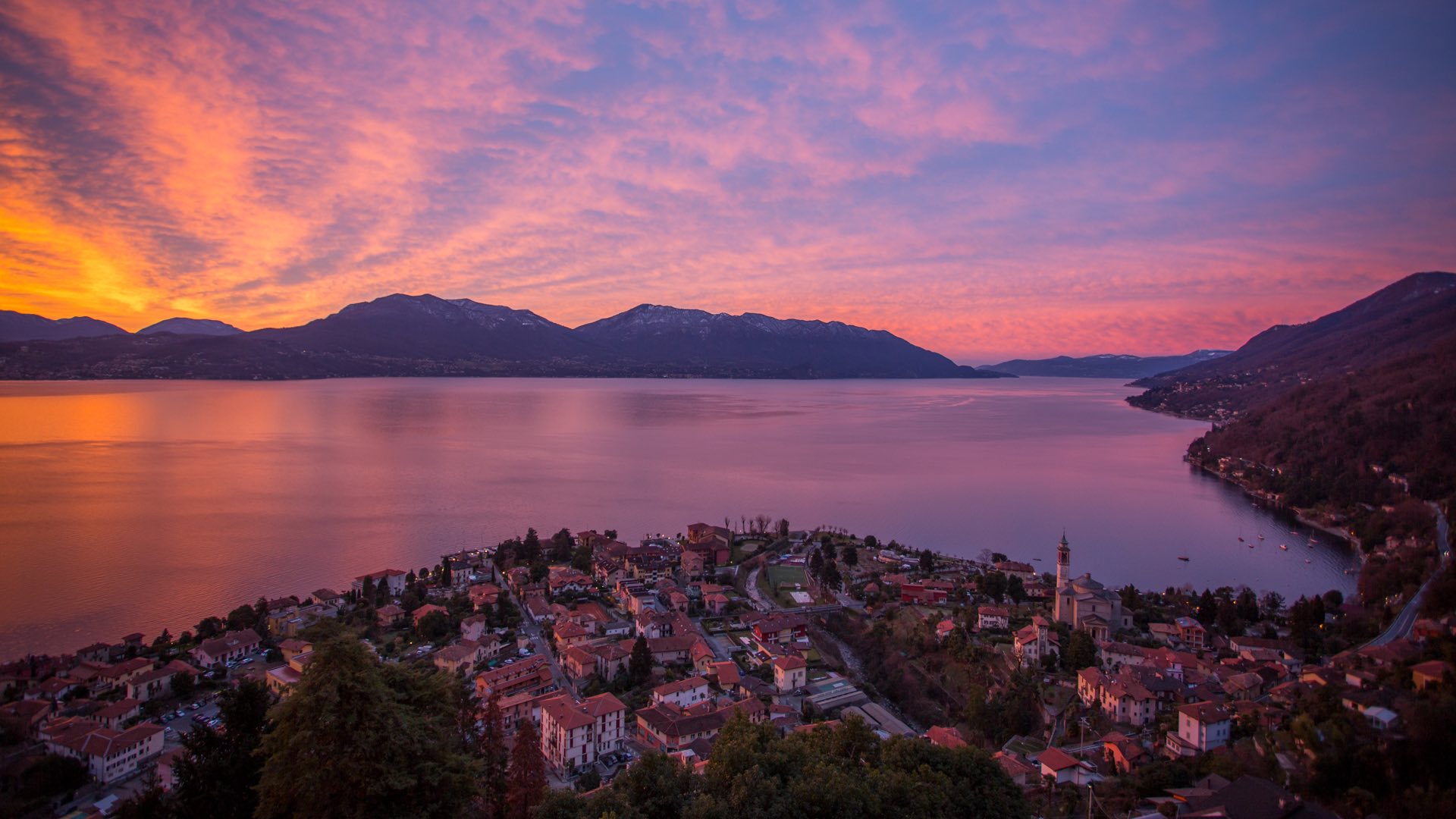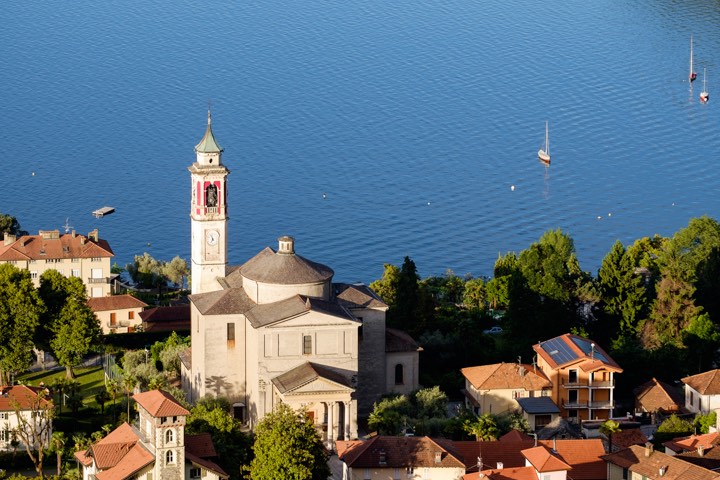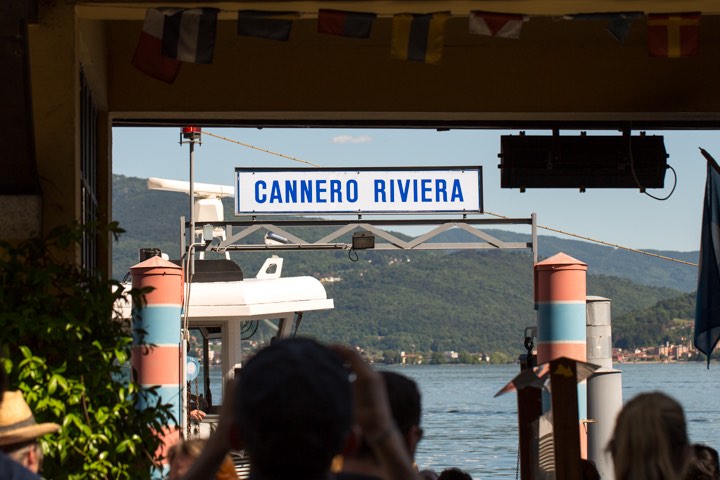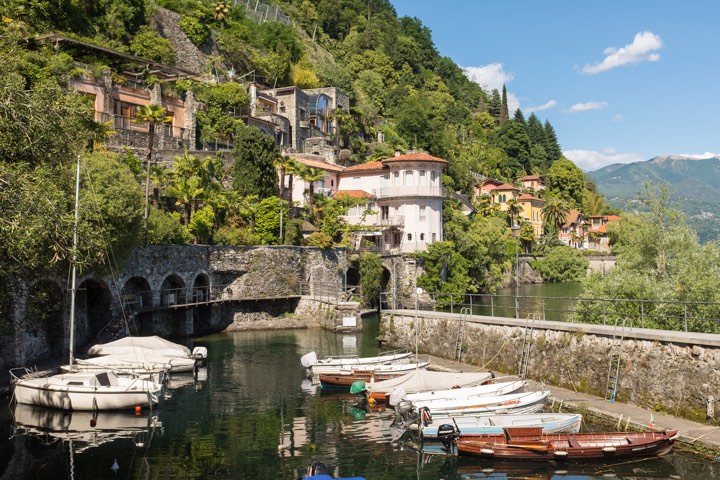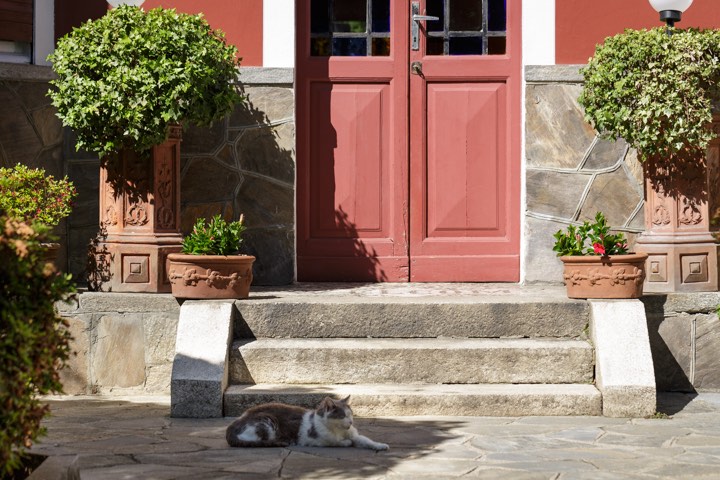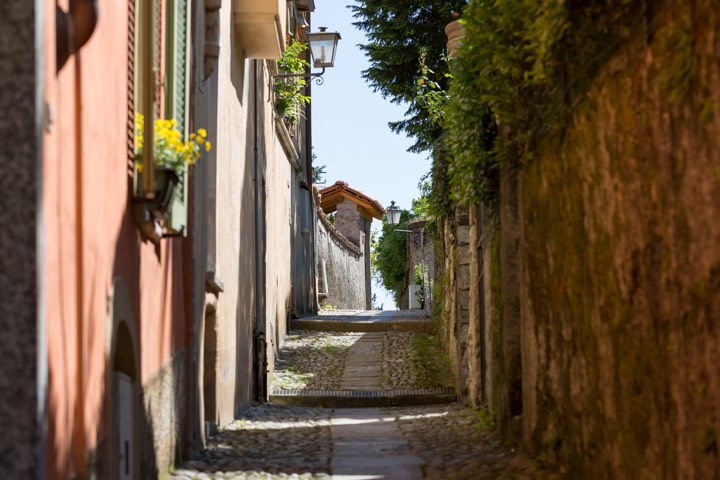The Village of Cannero Riviera has long been a subject of dispute in the late Middle Ages between the Milanese family Sforza and Visconti. The islets Castelli di Cannero are part of this story.
Between the 12th and 14th century, the family of Mazarditi used these islands as a base to threaten the region with raids and piracy. The ruins on the island are a major tourist attraction today.
The English Queen Victoria in the 19th century and Winston Churchill in the 20th century made Cannero Riviera famous.
Cannero Riviera is located on the shore of Lake Maggiore, in the Province of Verbania-Cusio-Ossola and lies on the edge of the Piedmont region.
Due to the warm and moist micro-climate of this northern Italian location, unusual vegetation such as lemons, oranges, mimosa, Bougainville and even bananas grow wild here. This is the reason for the name "Riviera".
The area is known for its camellias, rhododendrons, azaleas and annual Camellia Exhibition in March. Visitors come from around the world including North America, Europe and as far away as Russia, China and Singapore.
The small old village of Cannero with its narrow streets was once a fishing village in the Middle Ages. Today it thrives in the summer mainly from tourism. The promenade in the shade of evergreen magnolia takes you along the lake for its pebble beach with a spacious lawn for sunbathing.
From the shore you can enjoy a unique view of the islands of the castles of Cannero Riviera and the town of Luino on the opposite Lombard shore.
More details about Cannero Riviera please refer to the website: www.cannero.it




